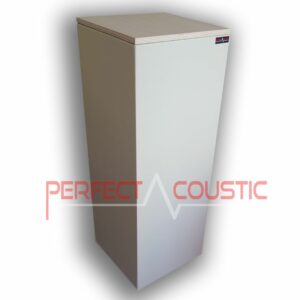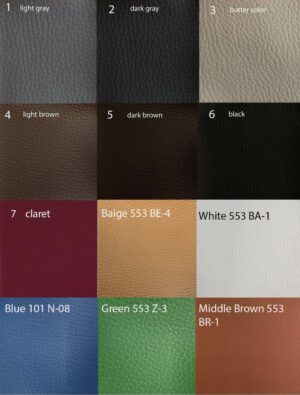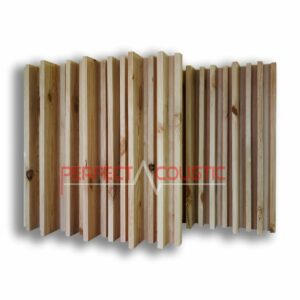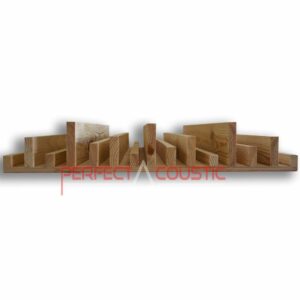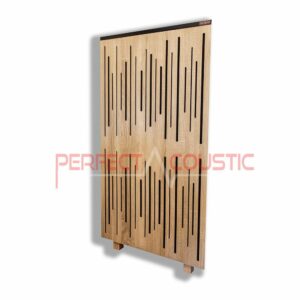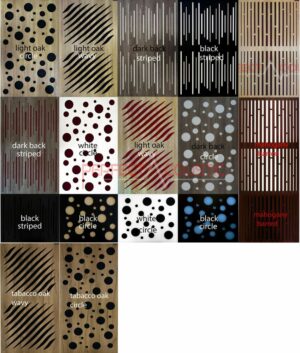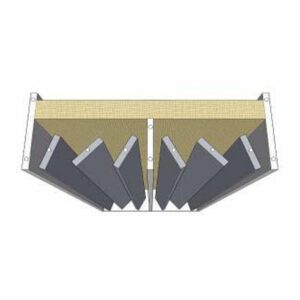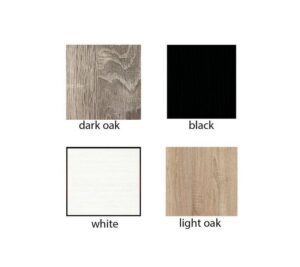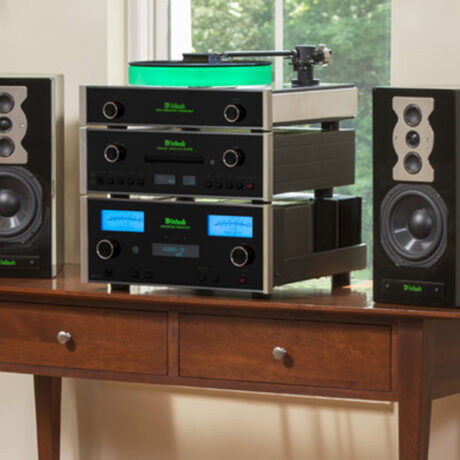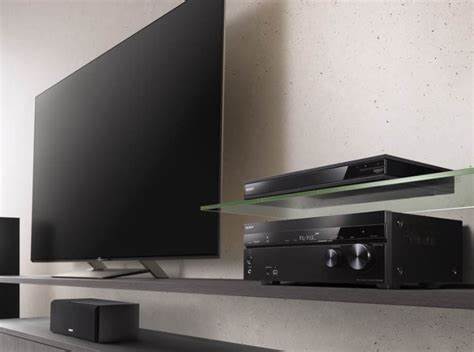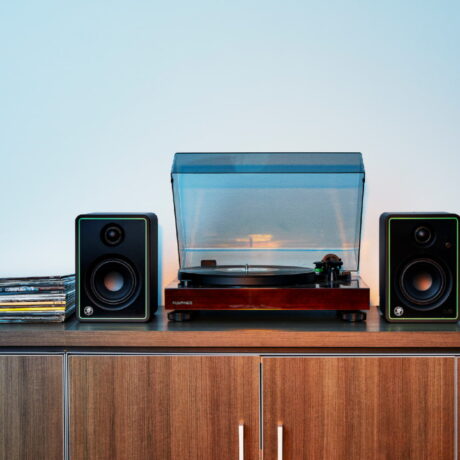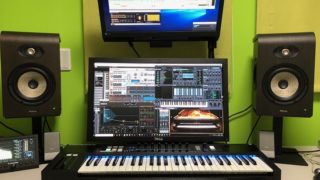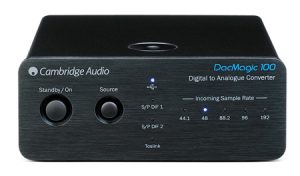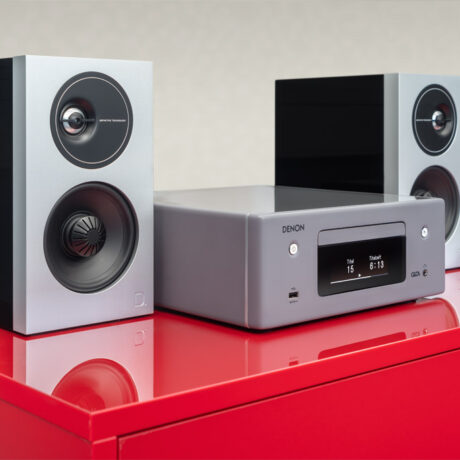Dynaudio Core 59 Active Studio Monitor Test
The impulse response of speakers is tested in the Jupiter Free Impulse Measurement Room at the headquarters of the Danish speaker manufacturer in Skanderborg. During testing, speakers are placed in the centre of the special acoustic room using a robotic crane, which can also be rotated around the structure. Another robot, which can even rotate vertically, a giant sphere of 31 microphones measures sound quality. The Core 59 three-way studio monitor was also developed at the Jupiter facility. It weighs 24.6 kg and measures 28x38x55cm.
Properties
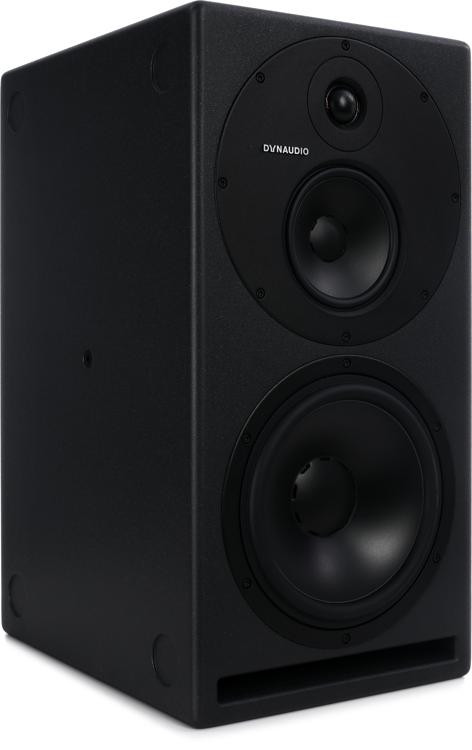
The speaker case is dark grey, the amplifier is class “D”, the drivers are handmade. The Esotar Pro neodymium soft dome tweeter optimises internal airflow. Thanks to the Hexis internal dome, it eliminates resonances, smoothes the frequency response, so dynamics are maintained even at higher sound pressures and there are no distortions.
In the case of the MSP, i.e. the centre speaker with a magnesium silicate polymer drive, the neodymium magnet is connected to an aluminium voice coil. The driver allows traversal at 312 Hz and 5.1 kHz, and can also handle the mid-range, thus avoiding crossover-based distortions.
The speaker has a copper voice coil and a ceramic magnet. The “D” class amplifier has a power of 500 watts, two additional “D” class amplifiers drive the high (150 Watt) and mid-band (500 Watt) drives. The hallmark of Class “D” amplifiers is optimum efficiency, i.e. they deliver quite high power with minimal loss. The tweeter and centre speaker drivers are installed in a housing with a circular front deflector that can be rotated in different directions, and set even in a vertical position. This way the Core 59 stands its ground when it comes to pair it with LCR and other multi-channel as well as Dolby Atmos studio monitor systems. Rubber pads, integrated mounts and a dedicated DSP adjustment ensure stability and flexible positioning options.
-
Giga bass panel with membrane94 € – 129 € +Vat
-
Striped Sound Diffuser 60x60x9cm108 € – 140 € +Vat
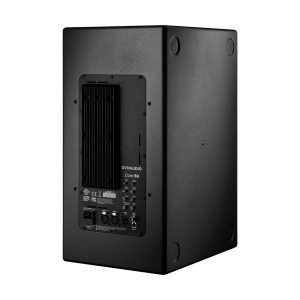
The back of the speaker is covered with a large metal plate and a very large heat sink ensures proper cooling. The Core 59’s Class D amplifiers are supplied by Pascal Audio in Copenhagen. The manufacturer promises clear sound even at high volumes. Dynaudio speakers have a life expectancy of 15-20 years.
Of the three XLR connectors on the back, two handle the monitor’s balanced analog and digital audio inputs, and the third XLR output can be used to connect it to another Core 59. When using the digital input, a 4-position switch allows you to set the maximum sound pressure level of the Core 59 to 88, 98, 100 or 112db. A second 4-position slider on the analog input helps optimising the speaker signal-to-noise ratio. The Core 59’s DSP is built around an Analog Devices 64-bit chip capable of operating at sampling rates up to 24bit / 192khz. Dynaudio’s Core 59 focuses on monitor-based DSP correction. The frequency range of the speaker is between 42 Hz and 21 kHz.
The easy-to-use EQ avoids phase shifts, and with the 80 Hertz filter you have the liberty to add a subwoofer. Sound Balance, or tilt filter, offers Bright, Neutral, and Dark settings. The tilt filter was developed by Quad in the 1970s to improve high sound performance.
Position settings
The monitor has two position settings. The first mode, Echo or Correction Free Mode (Anechoic), is a good idea to use when the monitor is in an acoustically well-managed room or when using room optimisation software. Desk mode is primarily used to compensate for reflections. The second position switch corrects the position of the monitor near walls. In an uncompensated mode, i.e. setting it in Free function, is useful when the monitors are placed more than 50 cm away from the wall. The Desk function corrects for low-frequency distortions and reflections that usually occur when the speaker is placed at a distance of 50 cm or less from the wall. The Corner function ensures proper corner positioning within 50cm from walls.
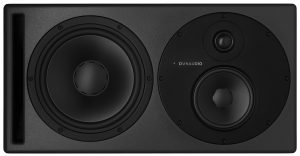
The speaker housing is 32 mm thick and very rigid, providing linear sound generation over the entire spectrum. The speaker also comes with an Operation Manual that provides detailed instructions on how to place the speakers and how to perform the sound tests that are recommended in order to set up the DSP correctly. For those who do not use a room acoustic correction software or hardware, Dynaudio recommends using a pink noise, measuring microphone, and a real-time analyzer (RTA) to monitor the performance of the Core 59 in the room. Once all these measurements done, it is recommended to use the DSP settings to obtain a flatter frequency response. The free Dynaudio Meter downloadable APP for iOS also features pink noise and RTA. (Pink noise = 1 / f noise, which power spectrum density, i.e., energy / hertz ratio, is inversely proportional to frequency.)
Sound
To perform our tests, we went to a sound recording studio of about 25 square feet, where the walls had acoustic panels providing ideal sounding. We first listened to Vivaldi’s Stabat mater. The accuracy of the speakers was impressive! Detailed sound, extensive stage image, powerful, deep sounds and clarity were all there for all frequency ranges. Moreover, the sound developed extraordinary dynamics and details, the instruments were clearly distinguished from the vocals, and we couldn’t identify any crossing problems in the mid-ranges. Our experience was akin while playing the soundtrack of the movie Schindler’s List performed by the NL Orchestra.
-
Sound traps with diffuser- If a good look is important146 € – 155 € +Vat
-
Flexi acoustic panel with adjustable wooden slats194 € – 287 € +Vat
Our opinion
The detail and accuracy of the Core 59 studio monitor is truly astounding, both the mid and high ranges sounded clear and perfect, we found no sound flaws. On the downside, we would only mention the fact that this studio monitor is mostly recommended for larger studios, moreover, when you see the price tag be sure it comes from the top shelf. However, for those who don’t mind the expensive price and may have a larger studio area, don’t hesitate to choose a Dynaudio monitor, you won’t be disappointed with the sound.
Acoustic treatments of rooms greatly contribute to the optimal sound of speakers. When choosing speakers, keep in mind some important considerations! It doesn’t matter what are the dimensions of the given room where you are going to place the speakers, what shape, what type of walls it has, only the acoustics design matters. It is also a decisive fact for what you are going to use the monitors for, professional or hobby purposes. Completely different types of speakers are required when used in a recording or mixing studio, or linked to a home theatre system, moreover, listening to stereo music also requires another type of speakers.
G.H.
Written by Róbert Polgár

